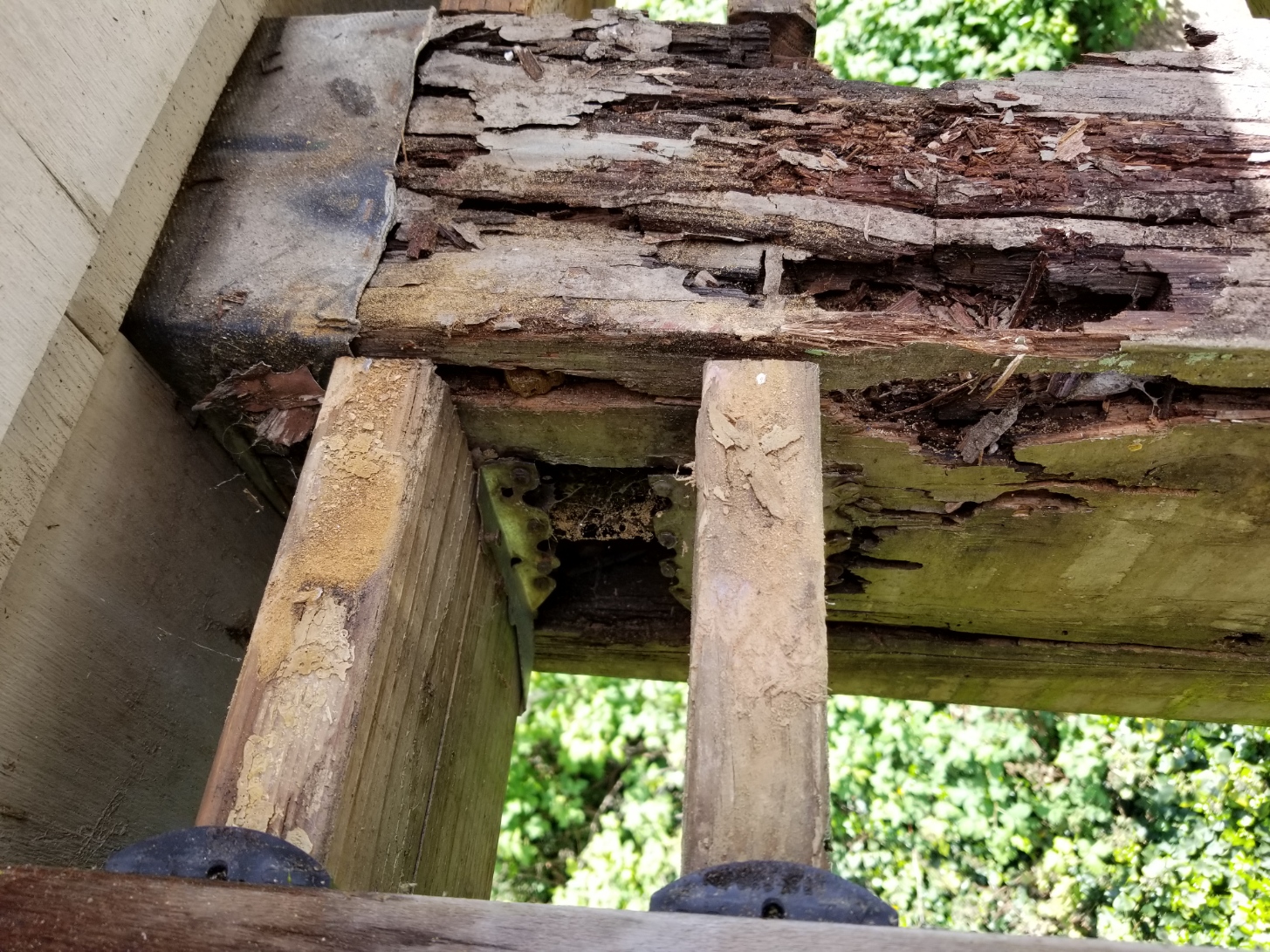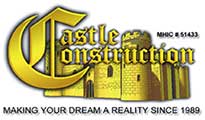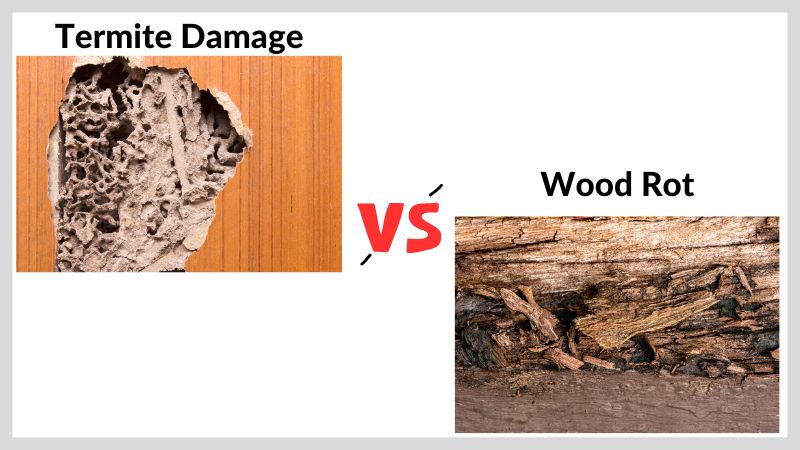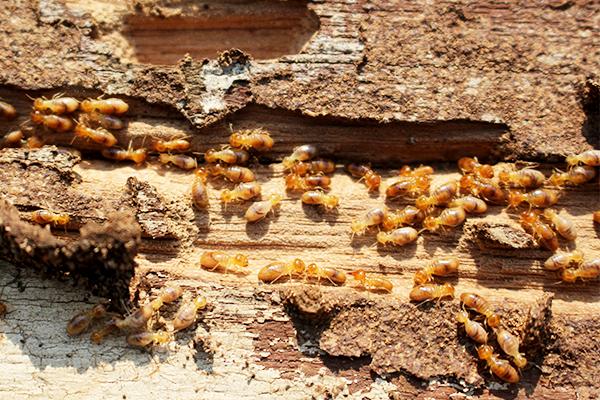Termite damage often presents as hollowed, weakened wood, while wood rot typically manifests as soft, crumbly areas. The two are distinct: termites actively consume wood, whereas rot results from fungal decay. The differences between termite damage and wood rot are crucial for homeowners, as both can have severe impacts on the structural integrity of a property. Termites work secretly, eating wood from the inside out, which can lead to costly repairs if left unchecked.
What Is Termite Damage?
Termite Damage begins with recognizing that these pests can quietly wreak havoc on wooden structures. Unlike wood rot, which results from fungal growth thriving on moist wood, termite damage is inflicted by insects that chew through wood, compromising its structural integrity.
These voracious insects often leave behind a series of hollowed-out tunnels and galleries, which can be difficult to detect until significant harm has occurred. Spotting the early signs of termite infestation like discarded wings, mud tubes, or Fras termite droppings is critical for homeowners to address the issue before extensive repairs become necessary.
What Is Wood Rot?
Wood Rot is crucial for maintaining the integrity of wooden structures in any home. This deterioration occurs when fungi infect timber, breaking down its fibers and compromising its strength. Unlike the damage caused by termites that voraciously consume wood, wood rot happens silently, often going unnoticed until significant harm has been done.
Essential moisture, coupled with suitable temperatures, sets the stage for fungi to thrive, leading to two primary types of decay: dry rot and wet rot. Dry rot is particularly nefarious; despite the name, it requires moisture to begin its devastation but can spread into dry areas, consuming wood from within and leaving a brittle, crumbly residue in its wake.

How To Tell The Difference Between Termite Damage And Wood Rot
Distinguishing termite damage from wood rot is key to ensuring the correct treatment and preserving the integrity of wooden structures. Termites leave a distinct pattern of destruction, often creating honeycomb-like channels in wood, as they consume the cellulose fibers. This damage can weaken structures, leaving behind a series of hollowed-out tunnels, which may not be immediately visible on the surface.
On the other hand, wood rot is a form of decay caused by fungal growth that breaks down the wood’s cellulose, leading to a softer texture. Wooden areas affected by rot can feel spongy to the touch and may even crumble easily.
The color of the wood can also provide clues; wood that has a darker discoloration might suggest rot, while termite-damaged wood will retain more of its natural hue minus the material they have consumed. Identifying these signs promptly can prevent more severe damage and conserve the longevity of the wood.
Which Is Worse: Termite Damage Or Wood Rot?
Deciding whether termite damage or wood rot is the more formidable adversary for homeowners can be complex. Both inflict serious harm on wooden structures, yet their origins and the nature of their destruction differ. Termites voraciously consume wood from the inside out, often leaving a thin veneer that masks extensive internal damage.
Contrastingly, wood rot arises from fungal growth that decomposes wood fibers, weakening the structural integrity over time. Prevention and early detection are pivotal in mitigating the destructive impact of these issues. Recognizing the signs of each such as the presence of mud tubes for termites, or discolored, crumbling wood for rot enables prompt intervention.
What To Do When You Discover Termite Damage Or Wood Rot
Discovering damage caused by termites or fungal decay in wood can be a distressing experience for any homeowner. Prompt identification and remediation are crucial to prevent further damage to the property. First, seek a professional assessment to determine the extent and cause of the deterioration.
Qualified inspectors can differentiate between termite damage, which typically involves hollowed-out wood and frass, the byproduct of termite digestion, and wood rot, which is characterized by discoloration and a spongy texture. Once the issue is diagnosed, it’s important to address the underlying moisture problems to combat wood rot or exterminate the termite colony to halt future infestations. Repairing or replacing the affected wood is necessary to restore the integrity of the structure. Empowering yourself with knowledge and acting swiftly ensures that the impact on your home is minimized, safeguarding it for years to come.
How To Prevent Termite Damage And Wood Rot In The Future
Maintaining a structurally sound and healthy home necessitates proactive measures against both termite damage and the deleterious effects of wood rot. Ensuring adequate ventilation throughout your home can drastically reduce the moisture levels that attract fungi causing termite damage or wood rot decay. Simultaneously, regular inspections for signs of termite activity are imperative; early detection can mitigate extensive repairs.
Implement barriers, physical or chemical, to deter termites from making your residence their next meal. Keeping your home’s perimeter clear of debris, such as fallen logs and damp firewood, will also minimize the appeal to these destructive pests. Embracing these preventative strategies can safeguard your property from the costly repercussions associated with termite infestation and wood rot.
Why Select Castle Construction For Termite Damage Vs Wood Rot Service
Choosing Castle Construction for addressing issues related to termite damage versus wood rot ensures expert service with a focus on long-term solutions. Our team of seasoned professionals brings to the table a deep understanding of the structural implications of both.
Termites can compromise integrity from within, while wood rot affects from the outside in, making each a unique adversary for your property. Castle Construction employs advanced diagnostic tools to accurately assess the extent of the damage and determine the most effective remediation strategy.
Our commitment to excellence is matched by our use of high-quality materials and proven repair techniques that stand the test of time, safeguarding your home against future problems. Each project we undertake is executed with meticulous attention to detail and a dedication to preserving the aesthetic and structural integrity of your property.
Frequently Asked Questions Of Termite Damage Vs Wood Rot
How Can I Tell If It’s Old Termite Damage?
To identify old termite damage, check for wood that sounds hollow when tapped, contains dried mud tubes, or shows no signs of active insects.
What Does Wood Look Like With Termite Damage?
Wood damaged by termites often appears hollowed out with a honeycomb pattern and may have mazes or galleries visible under the surface. It can also look blistered or have a series of small holes.
What Does Wood Rot Damage Look Like?
Wood rot damage appears as softened, discolored, or crumbly wood. It often exhibits mold, swelling, or a spongy texture.
How Do You Test For Termite Damage In Wood?
Inspect wood for hollow sounds by tapping it. Look for blistering or darkening which suggests termite tunnels. Check for termite droppings, resembling sawdust or coffee grounds, near wood surfaces.
Conclusion
The differences between termite damage and wood rot is crucial for home maintenance. Protect your property by identifying the signs early and taking action. Remember, termite damage or wood rot is termite infestations require professional intervention, while wood rot can often be managed through prevention and timely repairs.


